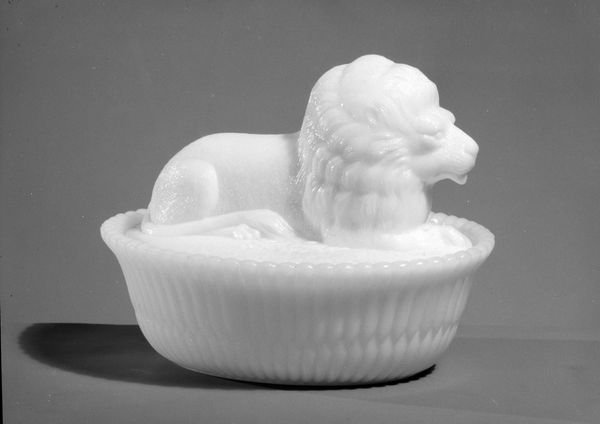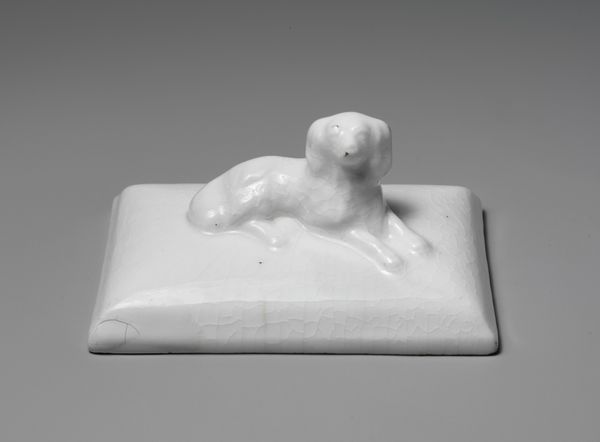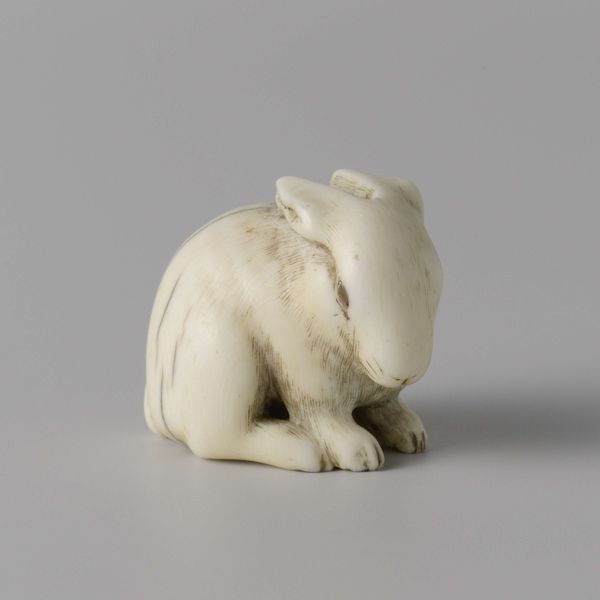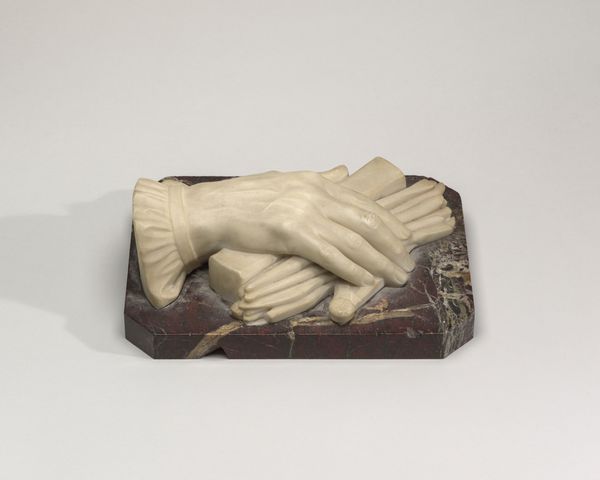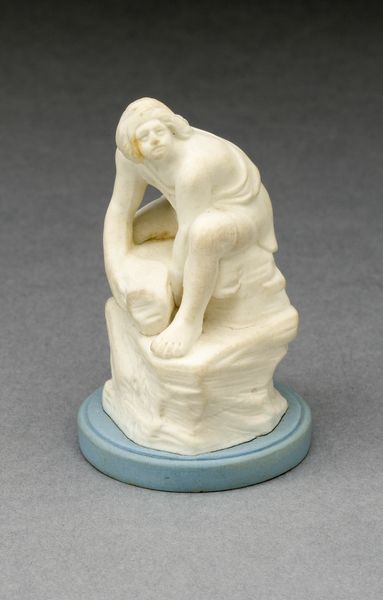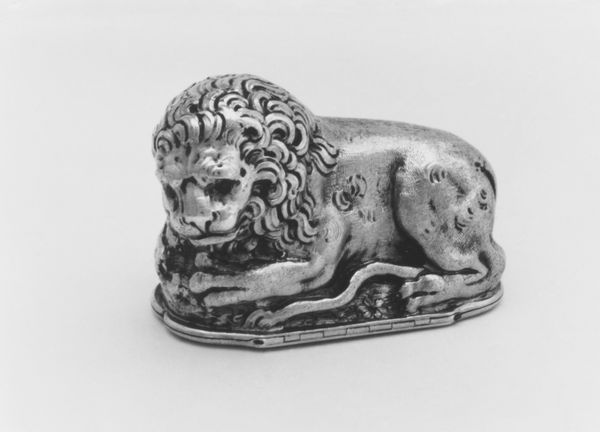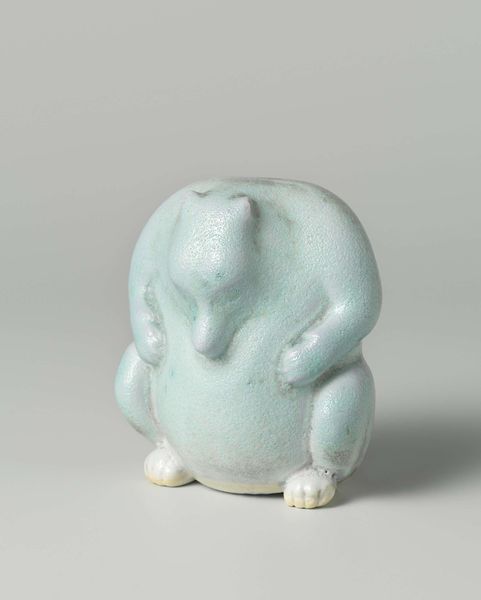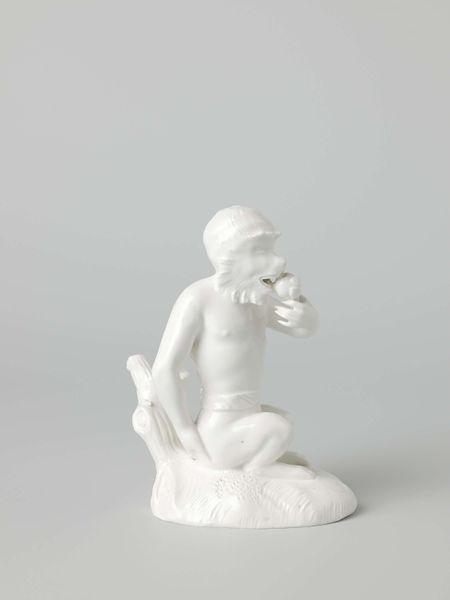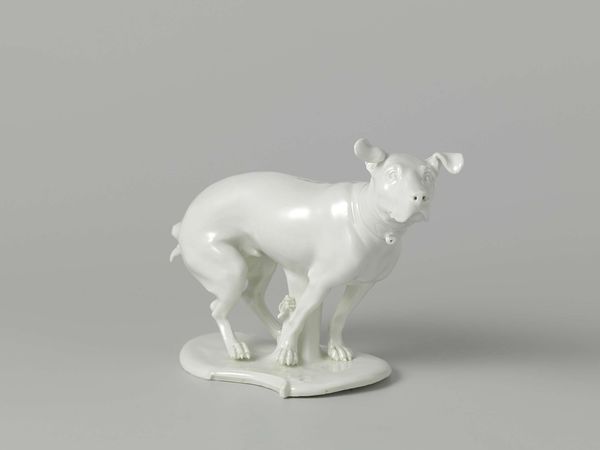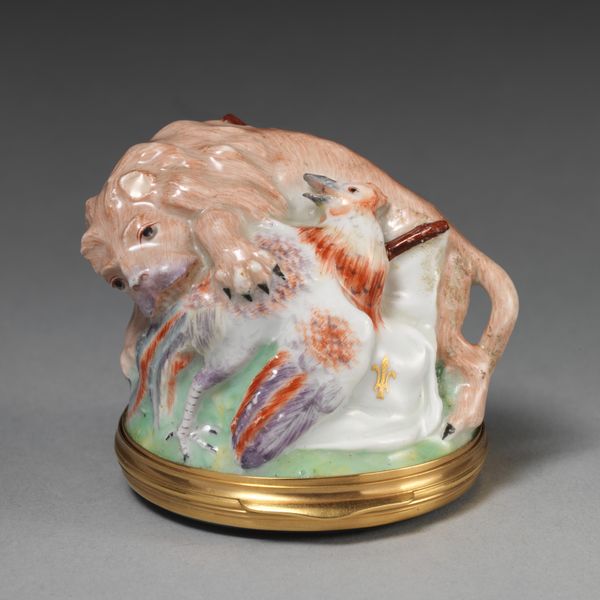
ceramic, sculpture
#
ceramic
#
figuration
#
sculpture
#
ceramic
#
decorative-art
Dimensions: 2 1/16 x 2 1/8 x 1 7/16 in. (5.24 x 5.4 x 3.65 cm)
Copyright: Public Domain
Curator: Immediately I’m struck by this curious little object; the anonymous ceramic sculpture entitled “-Sleeping Dog- still bank,” dating to the late 19th or early 20th century, now housed here at the Minneapolis Institute of Art. The ceramic’s plain, almost bleached appearance has a particular aesthetic appeal. What’s your take? Editor: It looks deceptively simple. That monochromatic glaze really emphasizes the form and texture, or the lack of it. I imagine a factory setting; slip-casting might be how this form came to be—repeatable, affordable. I am drawn to its mundane and social utility, it's everyday qualities of use and mass production. Curator: Certainly, it presents as a product of its era. The recumbent dog motif, a traditional symbol of loyalty and vigilance, tops a simple rectangular base, designed to hold coins. It subtly suggests trustworthiness; put your savings in my care, it says. Editor: So, more than mere decorative art? The ceramic itself would have been readily available and accessible in the late 19th century with the rise of industrial processes. What strikes me, though, is that this “bank” links thrift to something ostensibly domestic—a pet. This complicates any easy notions of loyalty that might accrue from just representing the dog. Is that dog sleeping soundly because its family is thriving? Or is it an ever-present reminder of economic anxiety? Curator: That is fascinating, a point well-taken. I had assumed it projected positive associations— domestic bliss perhaps? It's curious how potent seemingly minor visual symbols can be when attached to practices that are culturally significant like banking or saving for future stability. Editor: Right. I'm less focused on potential projection and instead want to return to how it was likely manufactured. Consider what firing the ceramic would require in the late 19th-early 20th century; not only were specific clays and additives used, but human labor also becomes quite present, making the social ramifications more interesting, and perhaps revealing more about economic anxieties than the iconography might imply. Curator: Fair enough. Thinking of the many unseen hands involved in the work’s creation brings me back to how such mass produced, almost banal, pieces nonetheless embed very specific symbolic information. So simple, but now so very thought-provoking! Editor: I'll be thinking more about those factory floors and the economies these ceramic objects were made in!
Comments
No comments
Be the first to comment and join the conversation on the ultimate creative platform.
